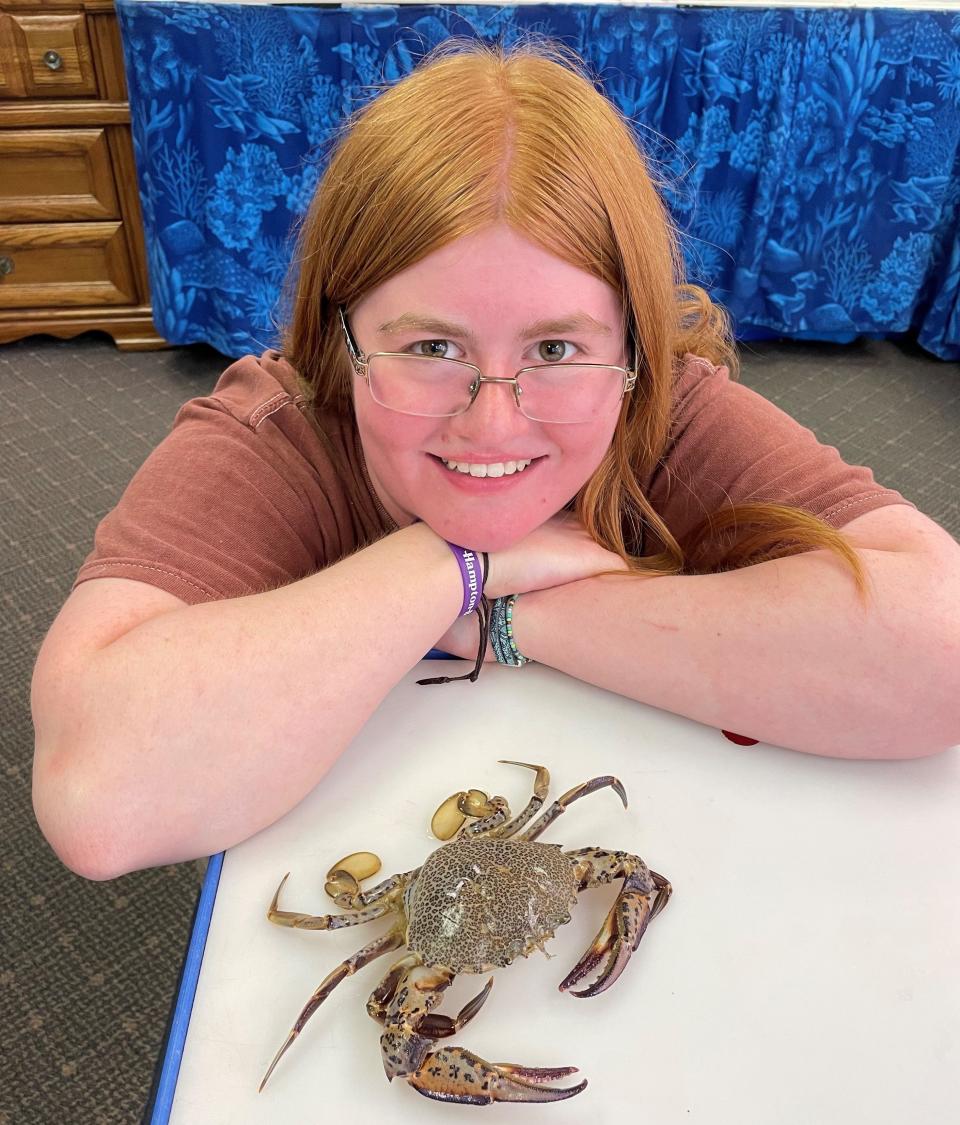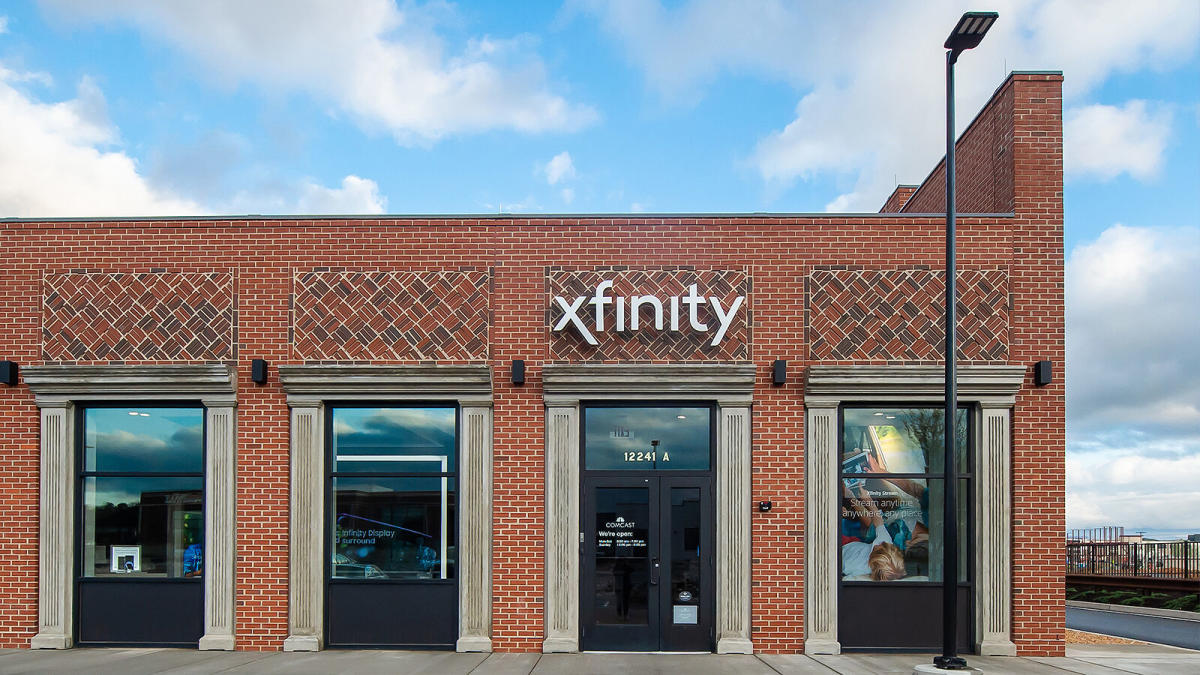HAMPTON BEACH — 2024 has proven, so far, to be full of unusual events, beginning with our strange weather and extensive flooding this past winter to some unusual animals showing up in the Gulf of Maine. I really hope that it isn’t a harbinger of what is to come!
Last weekend, I sent Catriel to the tidepools to see what she could find. Cat is a rising junior at the University of New England and works as an intern biologist at the Oceanarium at Hampton Beach. She was approached by someone who gave her a strange-looking crab he had found in the tidepools. He wanted to know what it was. She wasn’t positive but knew it wasn’t a common resident of the Gulf of Maine.
It looked like a lady crab, but I would key it out to be sure. And yes, this is not a native of the Gulf of Maine. What is going on here?
Interestingly many of the keys online report that they are native inhabitants from Virginia to Canada. (It just goes to show that you can’t always trust even Wikipedia!) This seemed odd to me, as I have never seen a live lady crab in New Hampshire. I began digging further.
According to a paper written in 2006 by J.C.A. Burchsted and Fred Burchsted, printed in the Canadian Field Naturalist, lady crabs (Ovalipes ocellatus) were last found in any abundance in the Gulf of Maine from 1951 to about 1954 during our last extremely warm water regime. According to the paper, lady crabs occur naturally from Cape Cod south and out to Georges Bank, and there is also a population in the Gulf of St Lawrence, Canada. The Gulf of Maine is usually just too cold for these species. According to the Burchsteds, lady crabs occur in the Gulf of Maine during summers when the temperature reaches 68 degrees Fahrenheit. They also state they believe these crabs may be expanding their range into the Gulf of Maine.
Anyone who has gone swimming at Hampton Beach in the summer and turned blue in a few minutes knows that the water reaches over 60 degrees for only a few days each summer.
Coddock? Sea sleuths work to uncover mystery of new cod-haddock-like fish
Earlier in May, while collecting animals from the commercial fishing boats for the tanks at the Oceanarium, the fishing vessel Midnight Sun gave me a blue crab. He caught it while fishing for haddock in federal waters (around 7 miles offshore). According to some old-time lobstermen, the last time blue crabs occurred in the Gulf of Maine was between 1951 and 1954, during that last cyclic warm water regime.
We have all read recently the Gulf of Maine is warming faster than any other body of water in the world. That is true if you measure the surface water temperature.
Something else is occurring as I type this article. The Canadian government and the U.S. National Oceanic and Atmospheric Administration (NOAA) have been measuring the bottom water temperature and have found an interesting turn of events.
Scientists Lindsay Beazley and Dave Hebert, of the Canadian Maritimes Region Atlantic Zone Monitoring Program, have noted for a decade that temperatures on the Scotian Shelf have been warming, but temperatures have been cooling for the past two years. In some places, the temperatures have been below normal. It is obviously too soon to determine if this is long-term or not. They did note that the Labrador Current has changed its path to a more normal flow. For the past several years, the Labrador Current has been further away from the coast. This has allowed the Gulf Stream to push closer to shore, bringing warm water into the Gulf of Maine and causing an ecosystem change.
According to Dr. George Maynard in his weekly update for fishermen who have joined NOAA in collecting data using water temperature, “scientists at SMAST, WHOI and the North East Fisheries Science Center report fewer weaker warm-core rings spinning off the Gulf Stream than in recent years and some of the coldest bottom temps in the Gulf of Maine observed since 2009.”

This is a very interesting phenomenon and bears close attention. It will be interesting to see what the bottom water temperatures do for the next several years.
Now, back to our lady crab. These crabs are commonly found in the intertidal areas with sandy beaches along the estuaries from Virginia to Cape Cod. They bury themselves in the sand, and sometimes, only their eyes are above the sand.
Lady crabs have been described as “vicious,” probably because they are fast and have extremely sharp, strong-elongated claws. They can also be spotted “swimming” in the shallow areas. Their last pair of legs end in a thin “paddle” that they use to stay afloat and skim the surface. They have a beautiful leopard-like spotted carapace with disruptive coloration that hides their true eyes from predators. As with all crabs, they are omnivores and will feed on just about anything, from seaweed to live or dead organisms. They have been observed feeding on Atlantic surf clams.
It would seem to me that Hampton Beach would be a perfect habitat for these crabs. Not only do we have a beautiful sandy barrier beach, but we have an extensive population of Atlantic surf clams along the shore. The only barrier, I see, to them extending their range is our cold, cold water. Time will tell if they stay or not. If they do, it will be interesting to see the reaction of the native lobsters and crabs. Who knows, maybe this will be the answer to running the invasive green crabs out of town!
Ellen Goethel is a marine biologist and the owner of Explore the Ocean World at 367 Ocean Blvd. at Hampton Beach.
This article originally appeared on Portsmouth Herald: Hampton Beach: Rare lady crab spotted: Why is it here?
Signup bonus from





